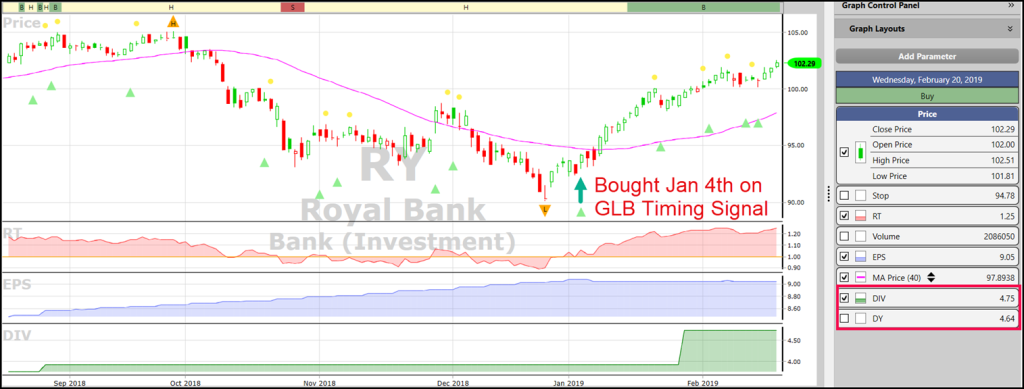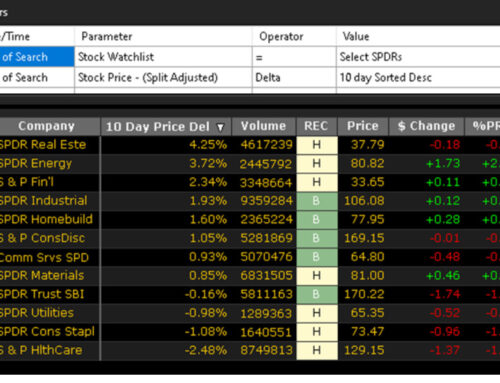Bear markets can be frustrating. However, when you manage them correctly, they create exceptional buying opportunities. The key is to know when to stop buying and raise cash by protecting profits, and, have the confidence to start buying again when the market is at or near a bottom.
Avoiding the pitfalls of the Emotional Market Cycle and actually exploiting it is one of my favourite lessons in our Investing for Retirement course. It’s also one of the most important.
As I wrote in last week’s column, investors who have been restocking their retirement portfolios with relatively safe, fundamentally sound stocks are off to a great start in 2019. Early January was a terrific opportunity to add high yield, “beaten down” quality dividend payers back into our portfolios. That’s what I did. Using Green Light Buyer (GLB) and Confirmed Up Call timing signals coming off a historically significant bottom, I bought shares of Capital Power Corp (CPX); Algonquin Power (AQN); Telus Corp (T); Royal Bank (RY); and National Bank (NA). Adding income was my primary goal. Capital appreciation would be a bonus, but buying when I did, the stocks are all off to a good start. The Dividend Yields were all above 4.0% and each one had increased their dividends for at least five consecutive years. RT was rising at time of purchase. Each one met my buy criteria.
So, now that I’m fully invested again in my Retirement Portfolio, I thought now would be a good time to review a few of VectorVest’s most important tips to maximize profits and minimize losses.
- When To Buy. Start stepping in as early in a new uptrend as you are comfortable, especially after the market is near historical lows in the MTI and BSR. It might be a Primary Wave Up signal, GLB or the Confirmed Call, whichever suits your temperament and risk tolerance. When your signal comes, be confident, and just do it! Favour safe, undervalued stocks that are rising in price. Now that we are four weeks into the Confirmed Up Call and the MTI is near 1.2 in Canada and 1.5 in the US, use more caution when adding new positions. Slow down your buying and wait for the perfect set-up.
- If price crosses below the 40-day MA, that is an excellent early warning signal, especially if the market is near a top and losing momentum or pulling back.
- If RT crosses below 1.0, that tells you the stock’s price is now in a downtrend. Take action, especially if the market is beyond the “blast off” phase and the trending phase, where the MTI is near historical highs.
- If bad news comes out about your stock such as bad management or bad earnings, or if VectorVest’s REC has turned to a SELL, ignore at your own risk.
- Before you place your Buy Order, know when you will Sell if price goes against you, and have a good idea of how high you think the stock could go. When you reach your target, it’s time to re-evaluate. You can decide to take profit if you think it’s near the top, or you can set a a new upside target and a new, tighter Stop-Price.
- If Price crosses below a trendline, consider selling. As the stock price moves up, you can adjust the trendline up, but never adjust it lower. You can also manage a position in the same way with a Moving Average. As the stock price moves up, shorten your MA, bringing the MA line closer to Price.
- If you know Options, you can generate income and lower your cost base by selling covered calls or you can reduce risk by purchasing a protective put. When you offset the cost of the put using the income from a covered call, that’s called a collar option.
- If the market stalls out and red lights start showing up in the Color Guard, consider tightening your Stop criteria, and when your Stop criteria hits, to be afraid to SELL! Cash is a position.
You can reduce your frustration in a Bear Market by following these EIGHT TIPS TO MAXIMIZE PROFITS AND MINIMIZE LOSSES.
PS, To register for the upcoming digital Investing For Retirement Course at the Special Early Bird discount price, please click here.











Leave A Comment